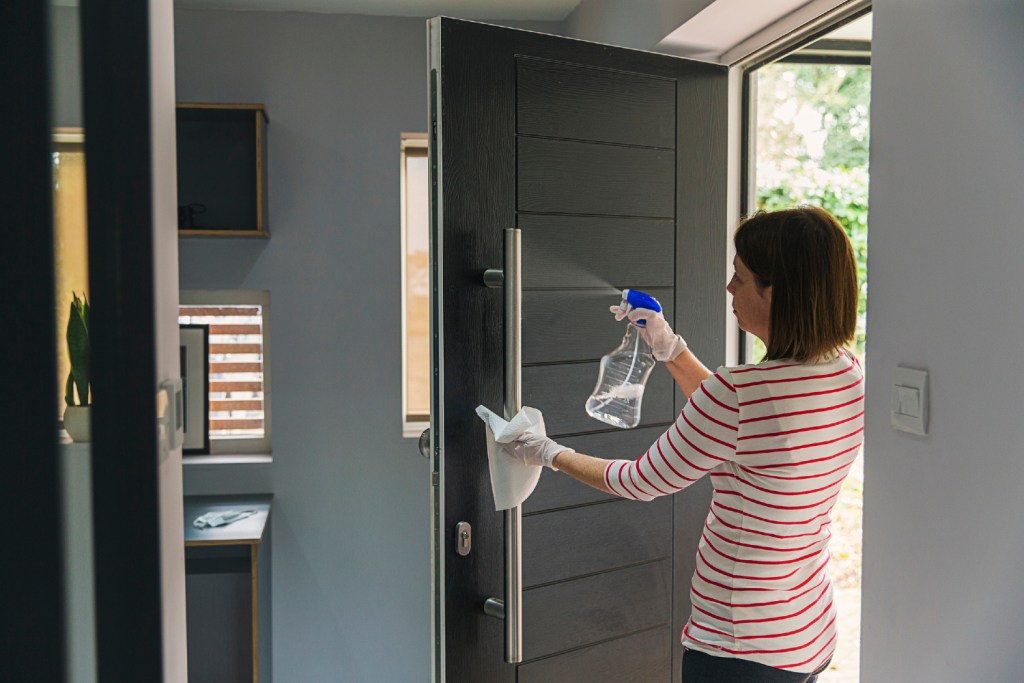It’s back-to-school season, and many school districts plan to resume in-person learning. As the COVID-19 pandemic and all of its variants continue to spread, it’s become more crucial than ever to keep your home clean, encourage regular hand washing, and maintain other sanitary practices. In order to keep school-age children healthy, many of whom are too young to be vaccinated, it’s always a good idea to implement a few heightened cleaning regimens and safety precautions at home.

How to keep your house safe
You have very little control over the cleanliness of public spaces, but there are steps you can take inside the home to protect your family from germs and infections.
Start with the right cleaning supplies
Use disposable cleaning wipes whenever possible. If you prefer to work with sponges or reusable cloths, be sure to clean them regularly with hot water. If they’re machine washable, throw towels in the washing machine and sponges in the dishwasher. Rinse mop heads in hot water after every use until the water runs clear, then ring them out completely or allow them to air dry.
When using disinfectant cleaners, follow the instructions listed on the bottle by the manufacturer. Certain solutions need to sit on the surface for a certain amount of time for the best results. To make sure your cleaner is effective against the COVID-19 virus, check out this list of EPA-approved household cleaning products.
Clean commonly touched surfaces
While surface transmission isn’t the most likely way to contract COVID-19, it can be spread from person to person when people come in contact with respiratory droplets from an infected person. Therefore, it’s possible for the virus to spread if you’ve touched an infected surface and then touched your eyes, nose, or mouth.
Wipe down any high-touch surfaces around your home, including:
- Cell phones
- Computer keyboards
- Remote controls
- Doorknobs
- Light switches
- Countertops
- Cabinet handles
Quarantine sick people at home
Even when taking proper precautions, people in your household may end up getting sick anyway. If someone in your family tests positive for coronavirus, keep them separated from the rest of the household to prevent further transmission to the rest of the family. Mask wearing is also essential for the infected person anytime they need to be in contact with others. Ideally, the infected person will be contained in a separate bedroom and bathroom, avoiding contact with the rest of the family and only leaving home for medical treatment.
If anyone in your household comes down with COVID-19, promptly notify the school(s) where your children attend so they can complete any necessary contact tracing. Until the infected person tests negative, be sure to limit the number of visitors to your home as well.

The best ways to keep your kids safe
The vaccine
Without a doubt, the single most important thing anyone can do to prevent the spread of COVID-19 is to get vaccinated. Parents and other adults in children’s lives should get vaccinated to reduce the risk of coming down with the virus and transmitting it to the unvaccinated kids. Since the CDC recommendation for the minimum vaccination age changes frequently, speak with your pediatrician to decide what is best for your child’s health and safety.
Good hygiene
One of the most effective ways to prevent the spread of disease is through hand washing. Make sure your children understand the importance of good hygiene, like coughing or sneezing into elbows and disinfecting surfaces.
Distancing
Have a discussion with your kids about the importance of social distancing. It may be difficult for younger kids to understand the severity of the issue, and many may not see the harm in hugging their friends. When distancing isn’t possible encourage your kid and their friends to wear masks and limit physical content. Make the process of mask-wearing easier by buying masks with their favorite character, a fun color, or a sunny print.
Outside play
Children are at a much lower risk of catching COVID-19 when playing outdoors, so encourage outdoor playtime whenever possible. When the colder weather makes playing outside less practical, organize safe indoor activities that include small groups and enforced social distancing.
As with any rule, kids are more likely to follow guidelines when they understand why they’re in place. Talk to your kids about the virus in a way that educates them but doesn’t scare them. Let them know that with a few small changes, they can reduce the risk of getting themselves and family members sick. Though you can’t control their cleanliness when they leave the house, you can provide a safe, healthy, clean environment to prevent transmission and contain any outbreaks that occur in your household.



